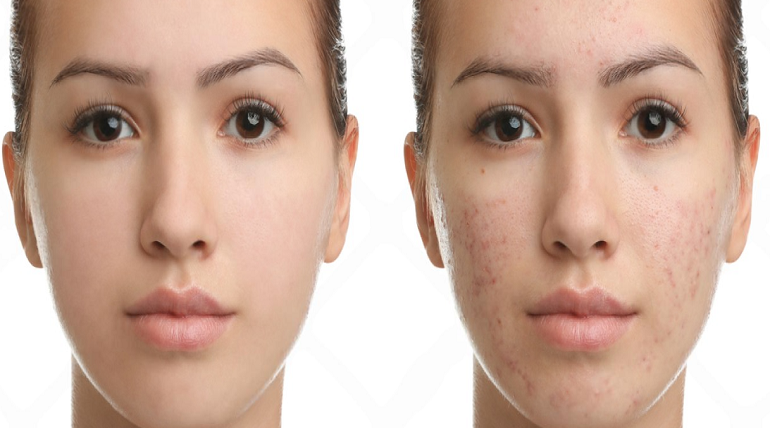
Understanding the Different Types of Acne

Understanding the Different Types of Acne
Acne is the most prevalent skin disease globally, with millions of individuals from all age groups. While it's most typically noticed in teenagers, numerous adults persist in getting blemishes late into their 30s, 40s, and even later. Acne results when hair follicles are blocked with oil (sebum), dead skin cells, and bacteria, causing several types of blemishes.
When most individuals hear the word "acne," they envision a couple of simple pimples. But acne is not a condition that fits all. It appears in a variety of forms—everything from blackheads and whiteheads to tender cysts and nodules. Each form of acne has varying causes, symptoms, and treatments, which is why it is crucial to know these differences in order to effectively manage the skin. The purpose of this blog post is to assist you in recognizing the various forms of acne, understand how to identify them, and investigate the best available treatments—over-the-counter, prescription, or professional treatments. Once you understand the character of your acne, you will be able to make better decisions about your skincare regimen and receive proper assistance when necessary, leading ultimately to healthier, clearer skin.
Types of Acne
1. Non-inflammatory Acne
This is usually a less severe type of acne that does not cause redness or swelling.
a. Whiteheads (Closed Comedones)
- Appearance - Small, flesh-colored or white bumps beneath the skin.
- Cause - Oil and dead skin clog pores but are protected by a layer of skin.
- Common Sites - Nose, cheeks, and chin.
- Treatment Suggestions
- Use salicylic acid cleansers.
- Shun heavy creams and makeup.
b. Blackheads (Open Comedones)
- Appearance - Small black spots on the skin surface.
- Cause - Open pores filled with oil and dead skin that are clogged, but oxidized.
- Myth - The black is not dirt; it's from oxidation of melanin.
- Treatment Tips
- Use exfoliating products.
- Use topical retinoids for deep pore cleaning.
2. Inflammatory Acne
This form includes swelling, redness, and possibly pain. It's worse than non-inflammatory acne and tends to scar if left untreated.
a. Papules
- Description - Small, red, painful bumps.
- Cause - Inflammation of plugged pores.
- Feels Like - Grainy, rough texture.
- Treatment Tips
- Don't squeeze.
- Apply benzoyl peroxide or tea tree oil.
b. Pustules
- Description - Red bumps with a white or yellow center (pus-filled).
- Cause - Inflammation with bacterial infection.
- Treatment Tips
- Apply topical antibiotics or spot treatments.
- Keep it clean and avoid touching.
c. Nodules
- Description - Painful lumps deep on the skin.
- Severity - Generally needs professional help.
- Treatment Tips
- Don't pop or squeeze.
- Go see a dermatologist for oral treatment.
d. Cystic Acne
- Description - Painful, deep lesions with a large amount of pus.
- Most Severe Type - Frequently scars if not treated.
- Treatment Tips
- Needs prescription therapy such as isotretinoin.
- See a dermatologist for consultation.
Each of the above types of acne has its own set of causes and features, along with useful treatment recommendations. From mild whiteheads to cystic acne, these suggestions can inform your skincare regimen and treatment options for healthier, clearer skin.
Rationales for Choosing Bollin Clinic UK for Acne Treatments
We offer custom treatment plans and strive to meet our patient's needs at Bollin Clinic UK. Our clinics have integrated specialized acne treatment into advanced skincare solutions, often used for different skin types and severities due to acne. Bollin Clinic UK provides care, starting from the first consultation, subsequent treatment and maintenance visits. Comfort, safety, and self confidence throughout the entire process is essential.
